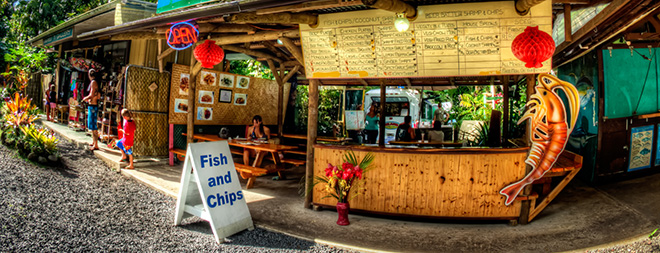Restaurant Menus May Reveal Changing Fish Populations

(ISNS) -- Researchers tracking fish populations in Hawaii have found an unlikely source of data tucked away in souvenirs from the island: menus from seafood restaurants.
Writing in the journal Frontiers in Ecology and the Environment, the researchers described their findings after combing through more than 300 different restaurant menus, some nearly 100 years old. The reason: to track how seafood availability and consumption changed over time.
The researchers discovered that when certain fish stocks were abundant, restaurant menus appeared to carry those fish more often; when fish stocks decreased, so did their appearance on the menus.
History of Hawaiian fishing
Before 1940, most menus carried near-shore fish such as reef fish, jacks and bottomfish, but after 1959, the same year that Hawaii became a state, the occurrence of such fish in menus declined dramatically. Official records also indicated a fall in these fish stocks around the same time.
After the 1950s, local restaurants started serving more pelagic fishes – those that live in the open seas far from land, such as tuna or swordfish; their numbers on the records started rising, again, around the same time. By 1970, large pelagic fishes were on 95 percent of the menus.
Other factors such as the economy, availability of resources and people’s tastes could have also influenced what’s on the menu. However, when the seafood is caught locally and supplied mostly to restaurants, how much the fish appear on the menu could indicate its abundance in the wild, the researchers believe.
Get the world’s most fascinating discoveries delivered straight to your inbox.
Due to its location, Hawaii has historically relied on the local fishing industry for its seafood supply. The researchers believe that this is perhaps why Hawaii's menus closely reflected actual changes in local fisheries. Also, the local populations of some animals, such as shrimp, were not accurately reflected on the menus, probably because the crustaceans were imported from the mainland U.S.
Why menus?
Fluctuations in fish population can be caused by a number of factors: changes in land use, pollution, algal blooms, agricultural run-off, impact of fisheries or increase in tourism, according to Kyle Van Houtan, an ecologist at Duke University in Durham, N.C. and lead author of the study.
To study these fluctuations, scientists have hunted for data from a variety of sources, including photographs, newspapers and artwork. However, the researchers point out that most of these surveys only study the supply side – the fisheries – and not the demand side – the restaurants and consumers. The wealth of information lying untapped in the menus could help fill a critical gap in fisheries records between 1902 and 1948, they wrote.
The idea that restaurant menus could contain a record of ocean populations first came to them while studying the endangered Hawaiian green sea turtle, Van Houtan said. He also leads the National Oceanic and Atmospheric Administration's Marine Turtle Assessment Program in Honolulu.
When green sea turtles in Hawaii were on the brink of extinction in the early 1970s, rising demand for turtle meat in restaurants was partly blamed.
To find out if the demand was indeed responsible, the researchers started examining old seafood restaurant menus to see how frequently the turtles appeared on them. But after looking at more than 100 menus spanning the preceding four decades, they found only one that had the sea turtles on it.
"It didn't jibe with what we were told, that there was this really heavy restaurant demand that was driving the population to extinction," Van Houtan said.
Curious to learn if the menus could reflect other animal populations, the researchers started tracking them down from various sources. Most menus came from private collections, some from museums, historians, tourism authorities, stores and libraries – even eBay.
"People have been collecting pieces of Hawaiian culture – Hawaiiana, we call it – for a very long time, since they started coming here in the 1910s-1920s. They keep everything: receipts, postcards, photographs, and the menus were just part of that," Van Houtan said.
Such studies show how science is increasingly becoming a part of our everyday lives, Van Houtan said.
Determining a cause
Paul Dalzell, senior scientist at the regional fisheries management council in Hawaii, called the study "interesting" but cautioned against making direct inferences from the menus to abundance in the wild. Other factors apart from the fishes' abundance could have influenced the fisheries and therefore the menus, he said.
"It's incredibly complicated: the interaction of people, market, resources, even weather and oceanographic cycles. They all have a bearing on fishery production," he said.
He pointed out the example of a fish poisoning scare in the 1980s that led to "almost a total collapse" of the commercial market for jacks. Although the fish were abundant in the ocean, fish markets and agencies stopped harvesting them, fearing legal backlash, explained Dalzell.
"There was a major decline in commercial landings (fish harvests) and not due to any resource problems but due to the fact that the volume of fish being caught was massively reduced," he said.
Inside Science News Service is supported by the American Institute of Physics. Ranjini Raghunath is a science writer in Mountain View, California.


